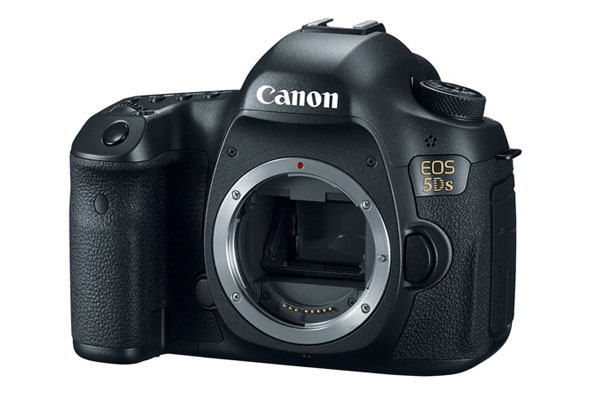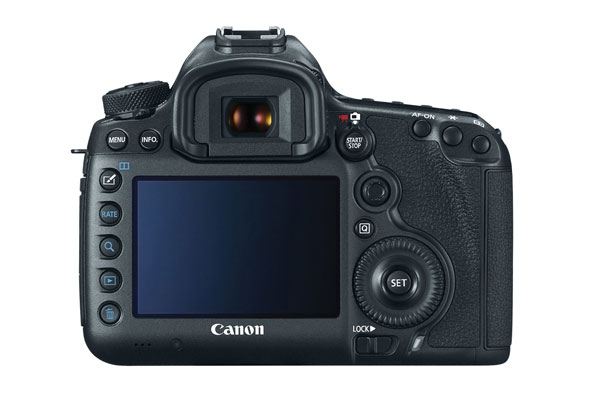Right after announcement with a flood of emails arriving I was quite excited. Amazing stuff. Full-frame Canon 5D siblings with an astonishing 50.6MP sensor. On second thought though the enthusiasm vanished. Not because the new Canon 5DS and 5DS R are no astonishing cameras — the latter has a “self-canceling” AA filter. Sounds Nikon D800Eish? But I am neither a landscaper nor a pixel peeper. Maximum ISO 6,400 (extendable to 12,800) is a bit underwhelming these days, but more interestingly Canon announces two high-end cameras that only become available mid-June. Sounds a bit like Leica. Don’t think though it’s a question of capacity constraints to announce the cameras that long before availability. It’s more likely caused by the increasing pressure of the competition. Canon had to produce something. And show it. Or is this just the prelude to… something really exciting?

With the two 50MP beasts, Canon presents old wine in new skins. Or new wine in old skins? No doubt the cameras will be stellar performers, betting on proven looks and ergonomics with quite some innovation under the hood. A built-in intervalometer is a time-lapse photographer’s wet dream come true. The interval timer takes from 1 to 99 shots at pre-selected intervals (from 1 second to 99 hours 59 minutes 59 seconds, or unlimited), ideal for shooting flowers as they bloom or clouds drifting through the sky. What camera can do that.
I bet autofocus will be snappy, but no Dual Pixel AF. You’ll say these two 5DS cameras are at least something new on the Canon front, but they’re really for croppers, stock, studio and landscape photographers who enjoy lots of predictable light and appreciate a camera with about the same dynamic range as the aging D Mark II — and don’t mind about the same or worse ISO performance as predecessors.
Writes DP Review about the world’s highest resolution full-frame DSLRs:
As far as dynamic range is concerned, we’re told that the new 5DS and 5DS R should give the same performance as the current EOS 5D Mark III. If true, this means that the new cameras won’t be able to offer the same industry-leading dynamic range of Sony’s current APS-C and full-frame sensors, but at least it isn’t a step backwards.

I’m impressed that Canon manages to produce a 50MP full-frame camera for roughly the same price a much less pixelated high-end camera costs. But more pixels a.k.a resolution-lead will hardly translate into better performance if you’re not printing gigantic sizes or if you’re not too much concerned about absolute picture-perfect detail. Furthermore, these 4th generation 5D cameras may well make many lenses redundant. Only the best glass will do. Using the 5DS with kit zoom? You’re joking.
So… why this camera… and why this article’s “going get tough” title? Canon had to produce something new. They’re not an adventurous company. But they see that today’s premium cameras capabilities already surpass most photographers’ skills. Or need 300 focus points and 30 fps? That wouldn’t be photography anymore, that would be industrial snapping. So they revive the megapixel race. By kind of sacrificing performance. Zero sum game.
So here comes great resolution at the likely expense of moiré patterning in areas of especially high-frequency detail. The pixel pitch of 4.14 microns is similar to the 7D Mark II’s, so expect a similar albeit full-frame reach minus Dual Pixel AF — and, how sad, Canon caps ISO at 6,400. The 2nd generation 7D extends to 51,200. And who would need 4K video performance.
So no, not a camera to lure me into the Canon camp. Instead I’d be tempted by the (not available in the U.S. folks!) M3, a fine sturdy little performer not to be worried about heavy duty use and abuse. Or maybe I got it all wrong and Canon’s on track to develop the holy grail. Or maybe not.
Same same, but different. Oh, and they’re only shipping this summer. This will give Sony & Co. quite some time. But… wait:
None of these new Canons have, again, Dual Pixel. What if the market leader is working on that full-frame mirrorless Dual Pixel camera, a camera fully compatible with EF glass. Could explain why no M3 for the U.S., certainly one of Canon’s more important markets.


